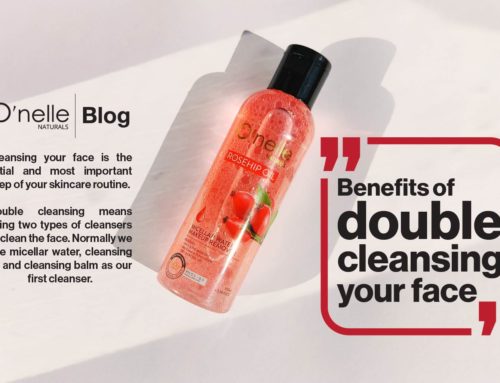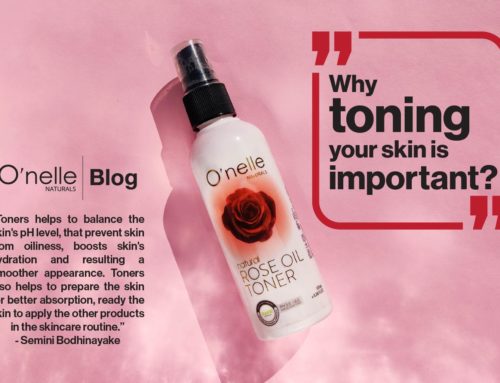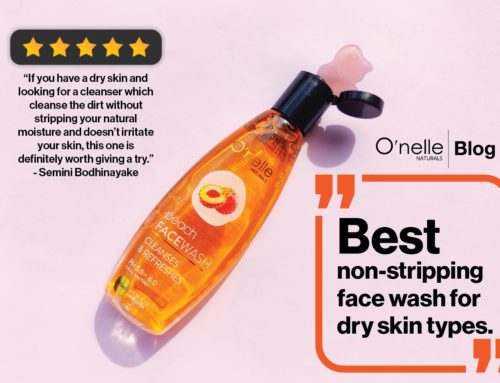The trick to caring for your skin is knowing your skin because understanding means you can find the right products that work for you and combat potential issues without causing more problems. Although everyone’s skin is unique, there are five primary skin types: Oily, Normal, Combination, Dry and sensitive. Understanding your skin type may help you find the right solutions to help achieve your skincare goals.
Trying to identify which one you are can seem confusing, but I’m here to help!
An easy way to determine your skin type is to carefully study your bare skin. You can start by washing your face with our mild cleanser/ face wash. Then, gently pat dry with a soft towel and refrain from applying any skincare products. After 25-30 minutes, observe your skin. What does it look like? Does it appear shiny on your cheeks and t-zone? You might have oily skin. Or, does your skin feel tight and have flaky areas? Your skin is likely dry. If you see an unbalanced mix of oiliness and dryness, you most likely have a combination skin.
Oily Skin
Oily skin refers to skin that has excess oil, most commonly throughout the t-zone of the face (forehead, nose, and chin.) Oily skin tends to look shiny, feel greasy, and is often prone to blemishes and breakouts.
Oily skin occurs when the skin barrier produces an excess of sebum, or oil, which can lead to clogged pores and blemishes. Those with oily skin should look for products that help balance excess oil and are non-comedogenic (i.e. won’t clog pores). We recommend exfoliating 2-3 times a week to help remove dead skin cells from skin’s surface and washing your face twice a day. Be sure to find a gentle face wash or a cleanser because using a daily face wash that is too harsh can irritate your skin and even increase oil/sebum production.
Normal Skin
Normal skin is well-balanced – not too dry or too oily. Those with normal skin are not typically prone to breakouts or flakiness and tend to have a balanced t-zone.
Luckily, skin concerns for normal skin types are generally minimal, so routines may be simpler. To help maintain balanced, healthy-looking skin, it is still essential to prep your skin with a gentle cleanser, hydrate with a daily moisturizer, and protect with broad-spectrum sunscreen during the day. You should also help replenish skin at night witha facial oil/ serum.
Combination Skin
Combination skin has areas that are both dry and oily. For example, skin is typically shiny on the forehead, nose and chin, while appearing dry or normal on the cheeks.
Combination skin can be a little more challenging to care for since it is made up of multiple skin types. The simplest way to care for combination skin is to look for products formulated for all skin types. Typically, formulas for all skin types help balance skin without over-drying or causing excess oil. Keeping your skin balanced is key for those with combination skin!
Dry Skin
Dry skin is generally rough, scaly, flaky, itchy or irritated with an overall dehydrated look and feel.
Since dry skin produces less sebum than normal or oily skin, the key to caring for it is to keep the skin barrier properly hydrated. The more moisture the skin holds, the healthier the skin’s appearance is. Without sufficient moisture, skin can be vulnerable to a weakened skin barrier, resulting in dry areas and ultimately speeding up the skin aging process. Those with dry skin should look for formulas that hydrate, nurture, and moisturize, and are free from alcohol, fragrances, dyes, or chemicals.
Sensitive Skin
Sensitive skin varies widely from person to person but is often characterized by visible redness and dryness. Sensitive skin may not always show visible signs and may simply have feelings of discomfort.
Visible signs of redness and the feel of tight, irritating and uncomfortable skin — all of which are indicators of a weakened and compromised skin barrier— often characterize sensitive skin. Care for sensitive skin by choosing gentle formulas that can help strengthen the skin barrier and look for treatments that are formulated to help treat visible redness and skin discomfort. Make sure to look for the ingredients before trying out any products.

The six basics of skin care:
No matter what type of skin you have, these tips will keep it looking its best.
- Use a broad spectrum sunscreen that blocks both UVA and UVB rays.
- Avoid direct sunlight, and wear a hat and sunglasses.
- Don’t smoke.
- Stay hydrated.
- Wash your skin gently but thoroughly every day and never wear makeup to bed.
- Moisturize.
Talk to me on Instagram:







